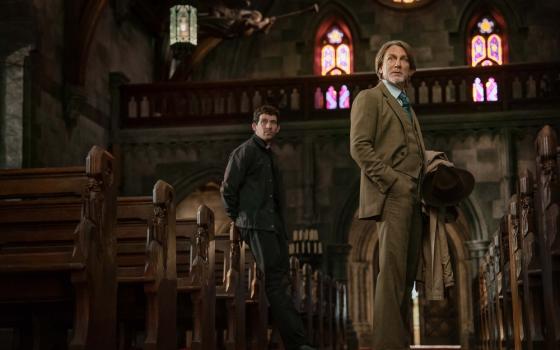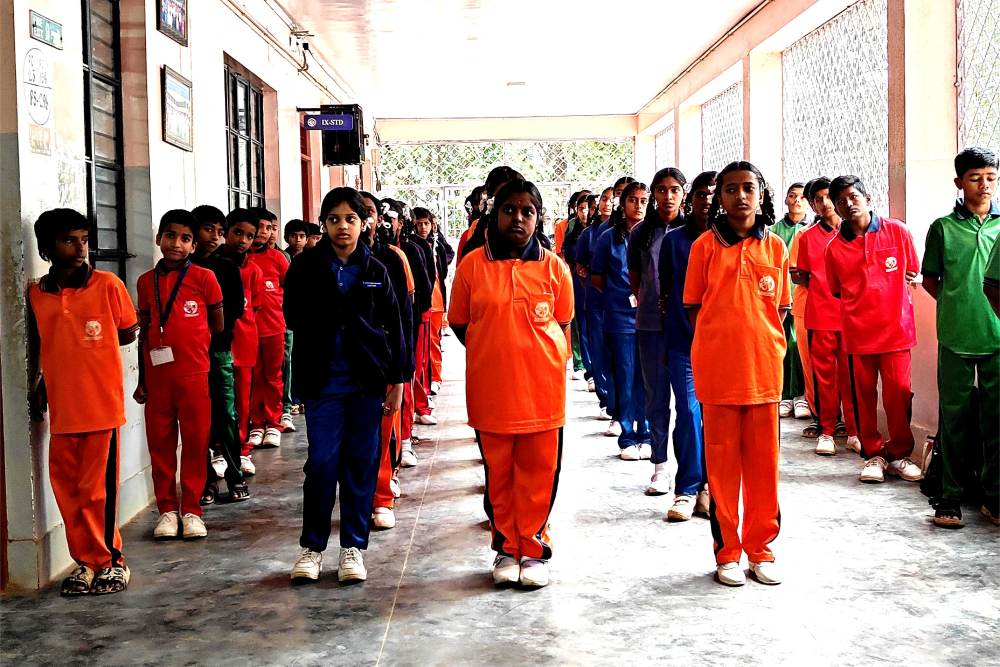
Students managed by the St. Joseph's of Tarbes nuns celebrate India's Independence Day on Aug. 15 in the presence of a Karnataka state government representative in the campus of Sumanahalli, a church center in Bengaluru. (Thomas Scaria)
Manjunath Muniappa was just 8 years old when a Catholic nun spotted him on the street during a leprosy detection survey in Bengaluru, capital of Karnataka state in southwestern India.
Sr. Mary Mascarenhas, a member of the St. Joseph's of Tarbes congregation, brought Muniappa to the leprosy treatment center of the Bangalore Archdiocese, where Franciscan Sisters of the Immaculate cured him after two years of treatment.
Mascarenhas educated Muniappa until the 10th grade and helped him get a ward boy's job in Bengaluru's Bowring Hospital, which is under the state government's health and family welfare department.
That was three decades ago.
Today, Muniappa has a stable job, a house and a family.
"I am grateful to both the sisters and the government for helping me stand on my own," Muniappa told Global Sisters Report in August.
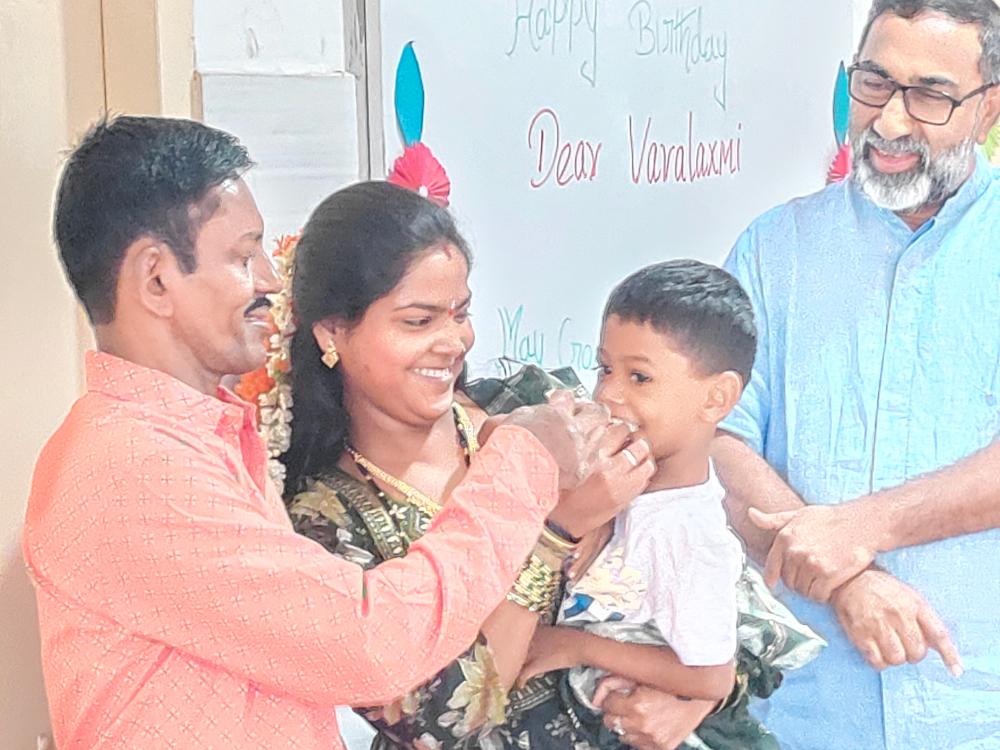
Varalakshmi, a resident of Sumanahalli celebrates her birthday with her husband (left) and daughter. Claretian Fr. George Kannanthanam (right) is also present. (Thomas Scaria)
Muniappa is among more than 500 leprosy-cured people employed by the Karnataka government under its collaboration with the Catholic Church, and leads "a dignified life," Mascarenhas told GSR.
The nun said that among India's 28 states, only Karnataka employs cured leprosy patients in its various departments. "This is a good model of how the church works with the government in making changes in the social system," added Mascarenhas, who is now 88.
The change was possible because Mascarenhas was a part of a team that worked with the Karnataka government in eradicating leprosy from the state.
In 2015, the federal government recognized the church-government collaboration by awarding Karnataka for employing more than 100 leprosy-cured patients in a year.
Former Karnataka Minister of Health and Family Welfare U.T. Khader received the award from Arun Jaitley, then-federal minister for finance and information and broadcasting, on Dec. 3, 2015, on the International Day of Persons with Disabilities.
Khader later said the honor was only possible because Mascarenhas and the Catholic Church worked closely with the state government.
Mascarenhas recalled Khader inviting her to accompany him to New Delhi to receive the award, telling her that she was the reason the award was given.
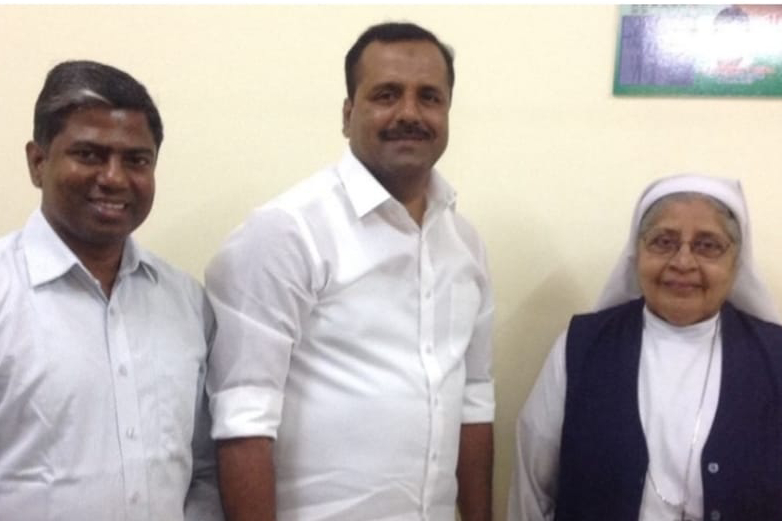
St. Joseph's of Tarbes Sr. Mary Mascarenhas with U.T. Khader (center), health minister of Karnataka state in 2015. He worked with the nuns to employ over 100 leprosy-cured persons in government service. (Courtesy of Sr. Mary Mascarenhas)
"We have worked closely with the government, as leprosy eradication was primarily the state's priority and the church championed this mission for them," said the Mascarenhas, who managed to convince other departments to provide housing, education, and vocational skills to the leprosy-afflicted.
She said the sisters campaigned successfully to facilitate government policies to include houses under a government project for the leprosy-cured patients.
Claretian Fr. George Kannanthanam, who now coordinates a network of seven congregations in the church-state collaboration as the director of Sumanahalli, said the change was possible "only because of our vision of a holistic approach to leprosy care and collaborating with the government."
In 1976, the then Karnataka chief minister Devraj Urs approached the Bangalore Archdiocese to help eradicate leprosy from the city, Kannanthanam said. The government then allotted land and funds to build a leprosy rehabilitation center on the outskirts of Bengaluru.
The priest commended the nuns for working effectively with the government systems to make changes in society.
"Many church missions are done in isolation, and that's why people look at us with suspicion," he added, referring to increasing attacks on priests and nuns in various parts of India.
According to the statistics from Sumanahalli, 1,029 cured leprosy patients have found jobs in either the public or private sector, 984 houses were constructed or renovated with the government projects, 190 couples were helped in community marriages and 14,572 children were educated.
However, the leprosy eradication mission received a setback in 2005 when the federal government declared that the disease was eliminated from India.
"Neither the state governments nor private agencies have funds now to continue the mission," he said.
Besides the Tarbes and Franciscan nuns, the Daughters of St. Camillus, Franciscan Sisters of Servants of the Cross — or Jyothi Seva Society — Montfort Sisters, Salesian Missionaries of Mary Immaculate, and the Daughters of the Church work together and with the government to give dignity to those afflicted by leprosy and HIV/AIDS.
Advertisement
Sr. Sagaya Mary, superior of the Franciscan Sisters of the Immaculate's convent in the Sumanahalli campus, said the church-state collaboration continues at every stage of leprosy, such as community survey and detection, treatment and rehabilitation.
The mission also includes education, imparting vocational skills, ensuring jobs for the disabled, housing, marriage and building up their families in dignity, she told GSR.
The Daughters of St. Camillus take care of bedridden, physically and mentally disabled children.
Sr. Bindu Maniyarackal, a Tarbes nun serving people affected by HIV/AIDS in Bijapur, some 325 miles north of Bengaluru, finds joy in various congregations coming together for the same mission and getting inspired from each other.
Her project is among eight centers involved in rehabilitation of leprosy patients, and other persons with disability or HIV, as part of the Sumanahalli network. *
Maniyarackal also collaborates with the government in the elimination of the Devadasi system, a religiously sanctioned system that drags young women into prostitution that leads to the spread of HIV/AIDS.
The inter-congregational collaboration strengthens Sr. Clare Mary, a member of the Franciscan Sisters of Servants of the Cross, who directs a school for the visually challenged in the Sumanahalli campus.
"We, too, are assisting the government in taking care of the disabled persons and strongly believe in networking and collaborations," she said.
Sr. Theresa Antony, a Tarbes nun who serves in Support, an HIV/AIDS home on the Sumanahalli campus, said their congregation is mostly engaged in education and job placement. It manages an English medium school for nearly 700 students.
Antony said their ministry expanded after Mascarenhas efficiently worked with government departments to bring justice to the leprosy patients and those with disabilities. "She is our role model," she told GSR.
Sumanahalli and the network of women religious are also part of a national association for leprosy-cured persons.
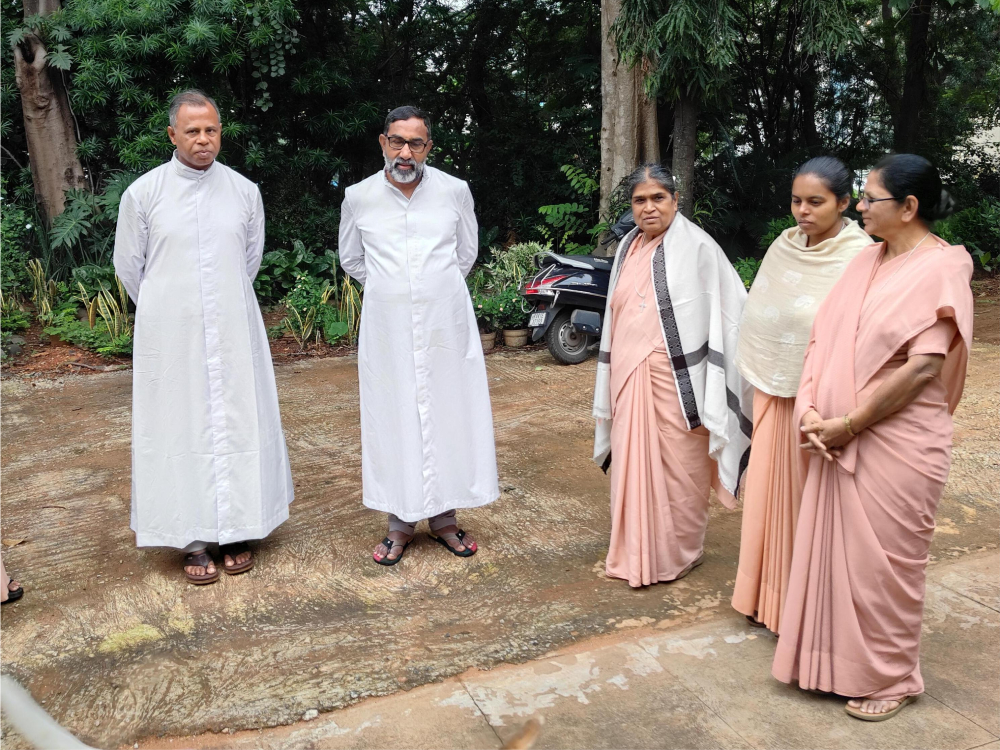
Priests and nuns interact after the morning Mass at Franciscan Sisters of the Immaculate Convent in the campus of Sumanahalli at Bengaluru, capital of Karnataka state in southwestern India. (Thomas Scaria)
Suresh Kumar, who leads the association's Karnataka chapter, told GSR they work closely with the Catholic Church and the government for collective action and empowerment.
"Every government employee from the leprosy-affected families is part of this association, and we play a bridging role between Catholic nuns and the government to avail various welfare facilities for the community," he said.
Many former leprosy patients, such as Mariappa, say leprosy not only disfigured them, but also deprived them of their right to live a decent life.
"The nuns touched us, cured and placed us back in society as normal citizens," said the 54-year-old, whose daughter's marriage was arranged by the nuns three years ago. "Now, I have a government job earning 40,000 rupees (US$460), my children are well-educated and employed."
Celebrating life is part of the new life of leprosy-cured people.
On Aug. 26, GSR witnessed the birthday celebration of Varalakshmi, a rehabilitated staff member at Sumanahalli.
"I came here as a 4-year old with my blind parents who were leprosy-affected. Both passed away over the years and now I am literally the daughter of Sumanahalli," she said as she cut the cake with her husband and daughter in the presence of Kannanthanam and the Franciscan Sisters of the Immaculate.
Several leprosy-cured patients have received excellence awards at their workplaces.
"There are good and motivated people wherever they are," said Mascarenhas, who wants the church in other states to work with the government in making structural changes in the lives of the poor and the sick.
Pradeepta Kumar Nayak, a special monitor of the National Human Rights Commission India, told GSR that the church has collaborated with the Karnataka government in a powerful way, "making things happen."
He visited Sumanahalli in the third week of August along with the Karnataka health ministry officials and lauded the church center's integrated model of leprosy management as a "perfect example of private-public collaborations in leprosy management."
*This story has been updated to remove previously published information about funding for the Sumanahalli network in order to be factually accurate.

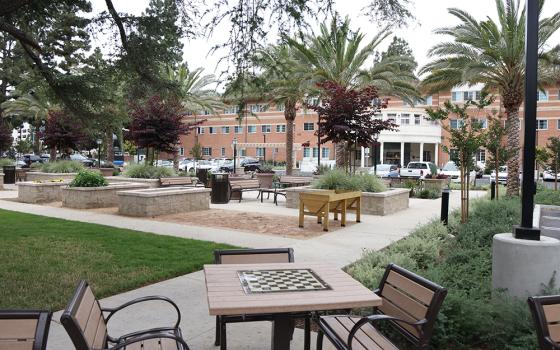
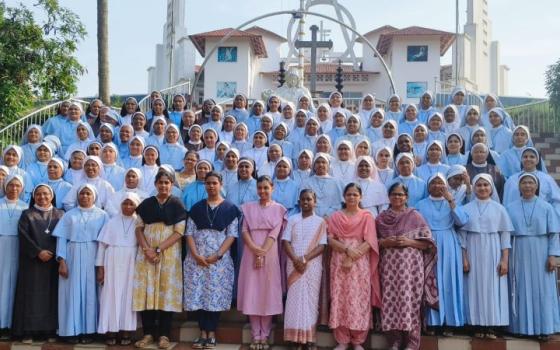
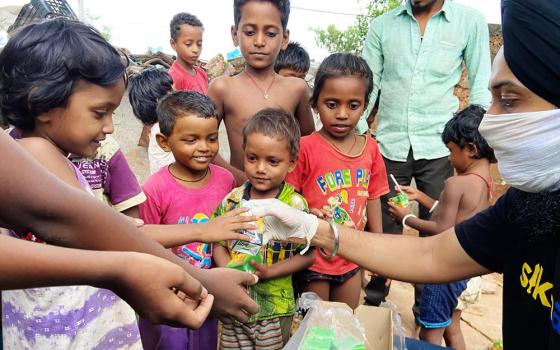
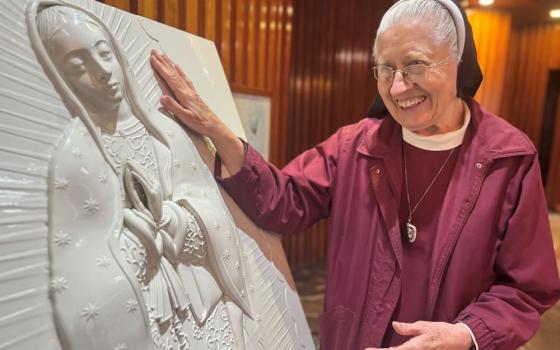
![The characters Fr. Jud Duplencity (Josh O'Connor) and Benoit Blanc (Daniel Craig) "are very much on opposite sides of the [faith] fence, but they've learned from each other," says Rian Johnson, writer and director of "Wake Up Dead Man: A Knives Out Mystery." (Netflix)](/files/styles/homepage_features_medium/public/2025-12/12.13.25%20Wake%20Up%20Dead%20Man%20image%204.jpg?h=27f45369&itok=iTtG9XdO)
